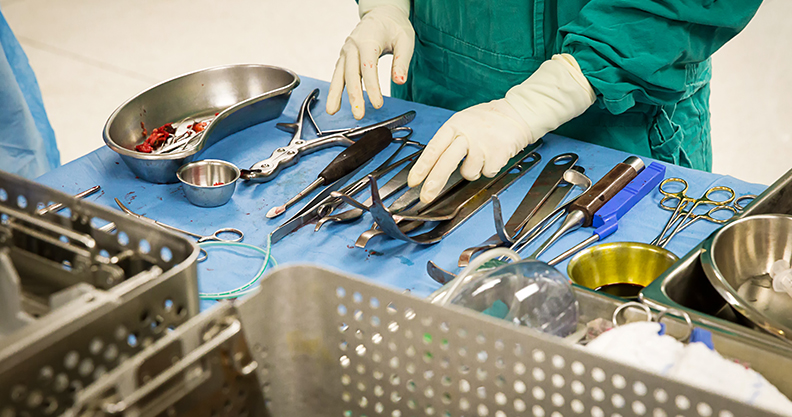
Device manufacturers increasingly seek to streamline their instrument inventories, a shift that demonstrates an attempt to cool the burn of their working capital spent on this segment of their business, and also a reaction to hospitals’ demands for simpler, more cost-effective solutions.
These requests have funneled down to their supplier partners, who have offered perspective on these industry changes.
One trend is a request to design and develop instrument sets that cover more implant lines.
“Think of all of the pressures on the OEMs. They have to cut cost out of the game,” says Tobias Buck, Chairman, President and CEO of Paragon Medical. “We have to develop different instrument set families that may be attached to a specific set of implants for a given OEM and make those sets common across a broader number of implants in a given segment.”
Another trend is the demand for single- and multiple-use disposable instruments due to cost savings, inventory reduction and the assurance of sterility for surgeries.
“Reusable instrumentation will be displaced, to a certain extent, by single-use instrumentation,” Buck says. “Some of that supports reduction of set configuration in the field. Single-use instrumentation is an approach to get cost out of the game and have the ability to bill for it, in some circumstances, contingent upon the way the billing is configured. Nobody is paying for those reusable instruments. The sets are just in the field in anticipation of a total knee or total hip or some other event.”
Disposable instruments present opportunities for large-scale cost reduction, as well as revenue growth.


Schultz says the ten largest orthopaedic device manufacturers and about 35 percent of the smaller players are using or in the process of fielding single-use instruments.
Traditional orthopaedic instrumentation such as torque, ratchet, driver/wrench, kerrison style rongeurs, benders, forceps, awls, tamps, retractors, guides and trial plates can be manufactured and disposed of in a cost effective way due to the increase in highly engineered polymers for instrumentation, says Doug Slomski, Vice President, Global Sales and Market Development at Caltorque Medical Products.
“While the need for reusable instrumentation will likely never go away completely, nor should it, we do see a greater understanding of the need, demand, use and economics behind the incorporation of single- and multiple-use disposable instrumentation,” Slomski says.
Schultz notes the high demand of disposable procedural kits in ambulatory surgical centers (ASCs).
“Because ASCs receive fewer reimbursement dollars than hospitals for like procedures, they are price and margin sensitive and are keen to embrace instrument sets that are sterile-packed and ready for surgery, easy to use, that improve OR efficiency, reduce inventory management and provide excellent outcomes at the best value,” Schultz says.
Disposable instruments also allow OEMs to better manage and reduce their inventories. Schultz estimates that 90 percent of today’s instrument inventory are loaners or consignment instruments and kits that are rarely sold to hospitals or surgical centers.


Disposables can also help to prevent performance failures and maintenance costs. As disposable kits are supplied, the products are terminally sterilized, providing for a fully validated kit that may potentially reduce hospital acquired infections.
“Many instruments that require extensive cleaning or periodic maintenance and calibration are proving to be unreliable, and there have been recalls,” Schultz says. “Performance failures of shafts and tips that undergo extensive wear and tear or mistreatment are not uncommon. These instruments are well made and expensive and have helped to create a $45 billion industry that provides demonstrated quality of life to millions of patients worldwide, but the model no longer works. Change is constant. New ways must be found to deliver value, hold and gain market share and tap into new markets quickly.”
Send comments on this article to Carolyn LaWell.
Photos courtesy of Caltorque Medical Products and ECA Medical Instruments




